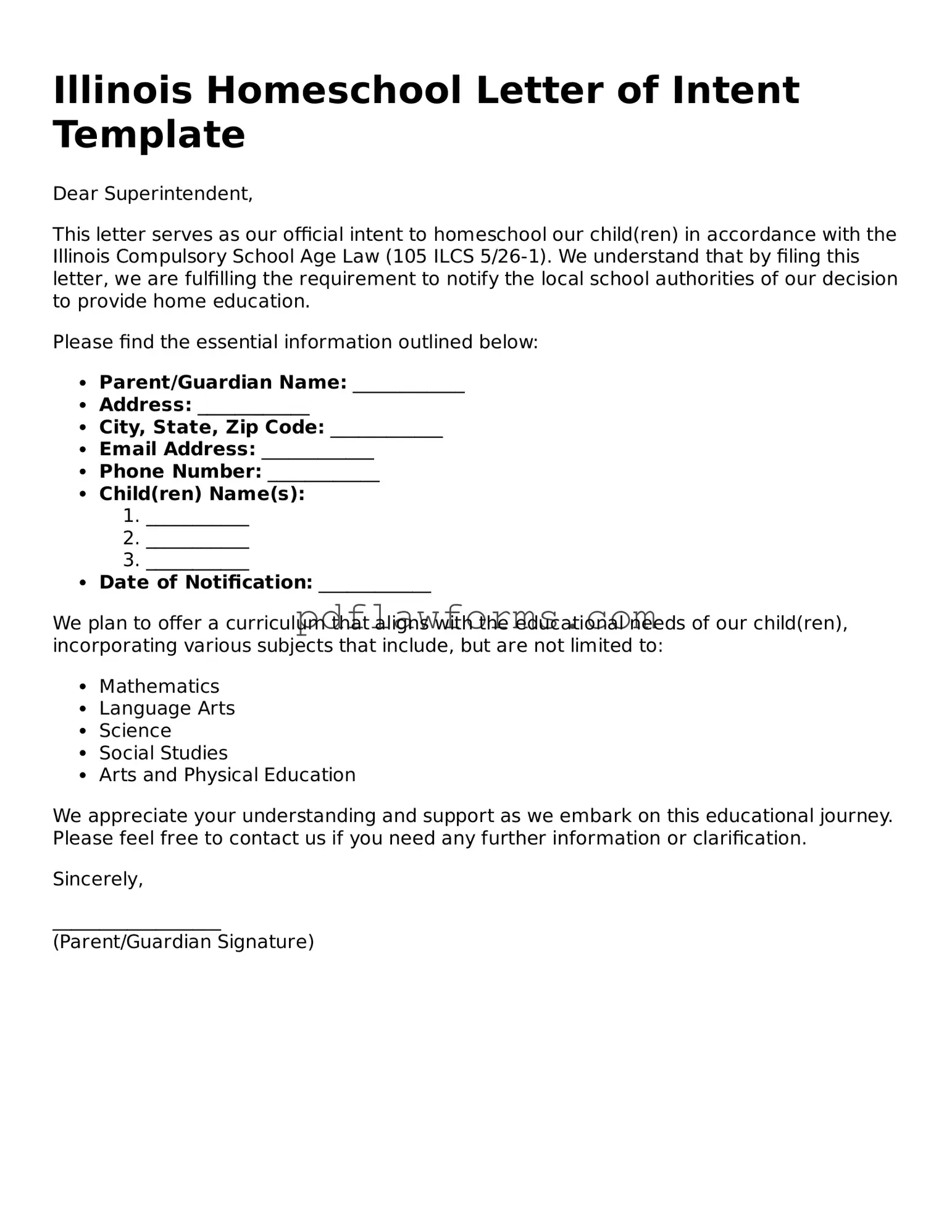Filling out the Illinois Homeschool Letter of Intent form can seem straightforward, but many families encounter common pitfalls. One mistake is failing to provide all required information. The form asks for specific details, such as the names and ages of the children being homeschooled. Omitting any of this information can lead to delays or confusion.
Another frequent error is not signing the form. While it might seem like a minor detail, a signature is essential to validate the document. Without it, the form may be considered incomplete, and the local school district may not recognize your homeschooling intent.
Some individuals also overlook the importance of submitting the form on time. In Illinois, the letter must be filed within a certain timeframe to ensure compliance with state regulations. Delaying this submission can lead to misunderstandings or even legal complications down the line.
Inaccurate information can also be a significant issue. Double-checking the details provided is crucial. If there are typos or incorrect dates, it can cause confusion for school officials and may require resubmission.
Additionally, people often forget to keep a copy of the submitted form. Having a record of what was sent can be invaluable if questions arise later. It serves as proof of your intent and can help clarify any misunderstandings.
Some families mistakenly believe that they only need to submit the form once. In reality, it's essential to stay updated on any changes in your homeschooling situation. If you move or add new children to your homeschool, you may need to submit a new letter of intent.
Another common oversight is misunderstanding the local school district's requirements. Each district may have its own specific procedures or additional forms that need to be completed. Researching these requirements beforehand can save time and frustration.
Failing to inform the local school district of your homeschooling plans can also lead to issues. Some families assume that submitting the letter of intent is enough, but it’s good practice to communicate directly with the district to ensure everyone is on the same page.
Lastly, neglecting to seek guidance from experienced homeschoolers can be a missed opportunity. Many resources and communities are available to help navigate the process. Connecting with others can provide valuable insights and help avoid common mistakes.
